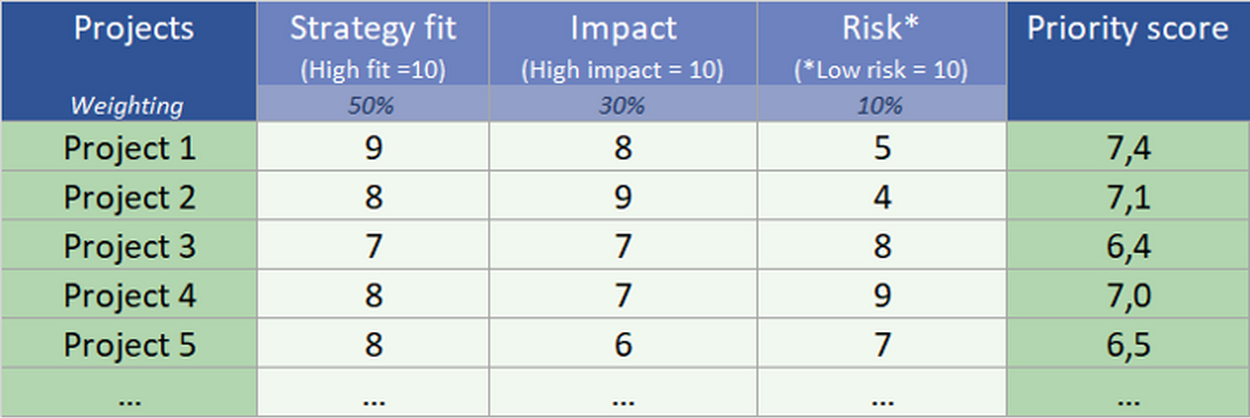Many organisations struggle with a shortage of resources for their innovation projects. So how do you ensure that your innovation engine runs as efficiently as possible with as little fuel as possible (people, financial resources, ...)? Should you rather speed up or slow down? And where should you put your efforts? If there is one magic answer, it’s “focus”!
There are two strategies you can consider to optimize your innovation efforts.
1. Optimize your Project Portfolio Management
Organisations are very good at adding innovation projects to their portfolio. On the other hand, they are less good at eliminating projects. The reason? They fear making wrong decisions and continue doing everything. This results in resource bottlenecks. Many organisations solve this problem by turning off the tap and discouraging the submission of new project proposals. Others increase the pressure on their resources but face huge delays.
The most successful companies, however, focus more on the quality of the project portfolio by making strategic trade-offs and focusing their efforts. Saying “no” & “not right now” is in fact one of the most critical success factors for good portfolio management.
After all, if most projects are approved or everything is made a priority, then the portfolio value will diminish. With the right focus and good resource planning, you can accelerate in projects that are the most impactful.To make the prioritization process more objective and consistent, companies with a more mature Portfolio approach use a Portfolio Scoring Model. It helps you to compare projects. Most basic portfolio scoring models use three criteria (Strategy fit, Financial impact and Risk) and a certain weighting. The absolute scores do not really matter, but it is a useful tool for comparing projects and having meaningful discussions about them.

2. Focus & simplify: channel your ideation efforts into specific idea challenges
If your organisation is already struggling with scarce resources, it can be counterproductive to have a bottom-up ideation approach and ask people to send in ideas on whatever topic. In that case it is better to rely on the wisdom of the crowd for very specific organisational idea challenges. Strategic challenges for which you already had plans to release resources or start a project. In this way, you reduce the risk of ending up with a disengaged community because you do not act on the ideas that the community puts forward.
You can even consider an "idea challenge" to identify obsolete tasks or processes that drain away resources without having much added value. As it happens, research has shown that if people want to solve problems or make things better, they tend to “add things”, even if the best solution is to “take something away”. It’s every organisation's blind spot. So, keep this in mind when you think about optimizing your product, portfolio or program.
In summary, limited resources do not mean you cannot innovate. Instead of trying to do everything or too much at once, focus sequentially on those things that have the highest impact. That way, you can make progress and make a difference.
Saying “no” & “not right now” is one of the most critical succes factors for good portfolio management
Tine Van Hecke, TomorrowLabWould you like some help for your innovation challenges?
Get in touch, we are always open for a conversation!

